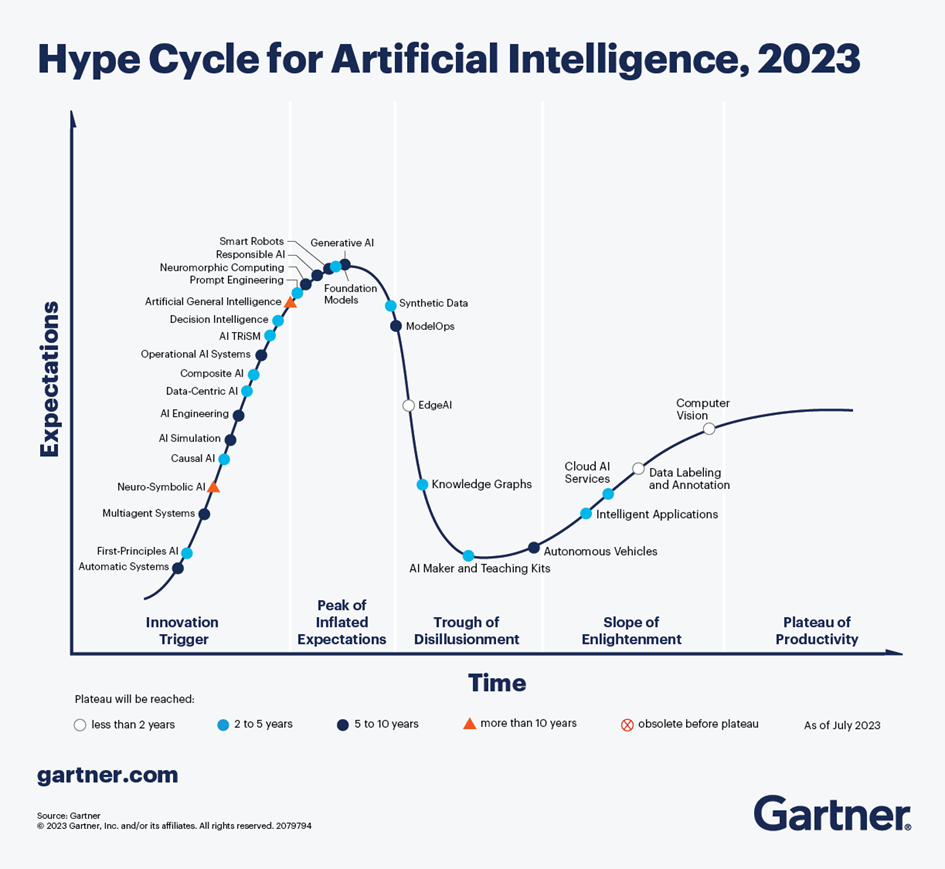Introduction
In an ever-evolving digital landscape, organizations and leaders are continually challenged to adapt and innovate. Generative Artificial Intelligence (Generative AI) has emerged as a powerful catalyst, redefining the where, when, and how of leadership and organizations. This article explores how Generative AI is boosting productivity, reshaping leadership competencies, and bringing about structural changes in organizations.
Generative AI and Enhanced Productivity
Generative AI is revolutionizing the way businesses operate, leading to unprecedented productivity gains. The application of Generative AI spans across various domains:
- Content Generation: Generative AI, such as GPT-3, can autonomously generate high-quality text, enabling writers to focus on more critical tasks while AI handles routine content creation.
- Data Augmentation: In data-intensive fields like data science, Generative AI augments datasets with synthetic data, saving time and improving model performance for AI applications.
- Design and Creativity: Tools like Adobe's Sensei and Generative Adversarial Networks (GANs) empower designers to automate repetitive design tasks and explore new creative possibilities.
- Problem Solving: AI-driven optimization algorithms find efficient solutions to complex problems in logistics, finance, and supply chain management, enhancing data-driven decision-making.
- Automation: AI automates repetitive tasks, from customer support with chatbots to data analysis, allowing human employees to focus on strategic and creative tasks.
Leadership Competencies in the AI Era
Generative AI is not just about automating tasks; it also transforms leadership competencies, requiring leaders to adapt and evolve:
Where Leadership Competencies Are Changing:
- Data Literacy: Leaders must be proficient in interpreting data to make informed decisions.
- Technology Integration: Understanding AI's potential and limitations is vital for strategic decision-making.
- Ethical Decision-Making: Leaders need to navigate ethical concerns related to AI-generated content and automated decisions.
When Leadership Competencies Are Changing:
- Real-time Decision-Making: AI provides real-time data and demands quicker, quality decision-making.
- Continuous Learning: Leaders must adopt a mindset of continuous learning to stay updated on AI advancements.
- Adaptive Leadership: Agile leadership is essential for responding to dynamic AI-driven changes.
How Leadership Competencies Are Changing:
- Collaborative Leadership: Leaders must foster collaboration between humans and AI, emphasizing communication, adaptability, and empathy.
- Innovative Thinking: AI should be leveraged for innovation, requiring leaders to be creative and open-minded.
- Change Management: Leaders must excel in change management to ensure smooth transitions and align organizational structures with AI integration.
Implementing Change
To successfully adapt to the AI era, organizations and leaders should consider the following steps:
- Continuous Training: Invest in ongoing training and development programs to enhance leadership competencies related to AI.
- Cross-Functional Teams: Encourage cross-functional teams, including AI experts, to foster collaboration and knowledge-sharing.
- Ethical AI Guidelines: Establish clear ethical guidelines for AI use and educate leaders on these principles.
- Agile Leadership Coaching: Develop coaching and mentoring systems that focus on agile leadership practices.
Business Driven Action Learning
Generative AI can be applied to process improvements in various ways, helping organizations optimize their operations, enhance efficiency, and reduce costs. Here are some applications of generative AI in the context of process improvements:
- Data Analysis and Insights: Generative AI can process and analyze large datasets, uncovering insights about process bottlenecks, inefficiencies, and areas for improvement. It can identify patterns and anomalies that might not be apparent through traditional analysis.
- Predictive Maintenance: By analyzing historical data and sensor information, AI models can predict when machinery or equipment is likely to fail. This allows organizations to perform maintenance proactively, reducing downtime and operational disruptions.
- Process Automation: Generative AI can automate routine tasks and workflows, eliminating human errors and reducing the time required to complete repetitive processes. This can include data entry, document processing, and other administrative tasks.
- Quality Control: AI can be used for quality control in manufacturing processes. It can identify defects or deviations from quality standards in real-time, leading to reduced waste and improved product quality.
- Supply Chain Optimization: AI can analyze supply chain data to optimize inventory management, demand forecasting, and distribution routes. This can help organizations reduce costs and improve the efficiency of their supply chain operations.
- Workflow Optimization: AI-powered tools can analyze and optimize workflows within an organization. This includes streamlining approval processes, task prioritization, and resource allocation.
- Natural Language Processing (NLP) for Customer Support: NLP-powered chatbots and virtual assistants can handle customer queries, route them to the right department, and provide faster, more efficient customer support.
- Energy Efficiency: AI can monitor and control energy usage in facilities to reduce costs and minimize environmental impact. This includes adjusting lighting and other systems based on real-time data.
- Human Resources: AI can assist in the recruitment and onboarding processes, matching candidates to job descriptions and streamlining administrative tasks associated with hiring.
- Feedback and Continuous Improvement: AI can gather feedback from employees, customers, and other stakeholders to identify areas of improvement. This data can be used to make iterative changes to processes and operations.
- Personalized Marketing and Sales: AI can analyze customer data to provide personalized product recommendations and marketing strategies, increasing the efficiency of sales and marketing processes.
- Regulatory Compliance: AI can help organizations stay in compliance with relevant regulations and standards by monitoring and flagging potential compliance issues.
- Resource Allocation: AI can optimize the allocation of resources such as personnel, equipment, and materials to ensure efficient use and reduce waste.
- Demand Forecasting: AI can predict demand for products or services more accurately, enabling better inventory management and resource planning.
- Process Documentation: AI can assist in creating and maintaining process documentation, making it easier for employees to follow standard procedures and ensuring consistency in operations.
Generative AI can support process improvement initiatives by providing data-driven insights, automating tasks, and facilitating decision-making. However, it's important to integrate these AI applications carefully, train employees on their use, and continually monitor and adjust the AI systems to ensure they align with the organization's goals and changing circumstances.
Conclusion
Generative AI is reshaping leadership and organizations by revolutionizing productivity, transforming leadership competencies, and driving structural changes. By embracing Generative AI and fostering a culture of adaptability, creativity, and data-driven decision-making, leaders can navigate the AI landscape effectively. Leadership competencies, aligned with Generative AI capabilities, create a dynamic synergy propelling organizations toward a future of innovation and success. In this renaissance of leadership, leaders and organizations must seize the opportunities presented by Generative AI to stay competitive and thrive in the digital age.

Gartner Hype Cycle for AI
AI had gained significant attention and was being tracked on the Gartner Hype Cycle. The Gartner Hype Cycle is a graphical representation of the maturity, adoption, and social application of specific technologies. Technologies typically go through different stages on the Hype Cycle, including:
- Innovation Trigger: This is where a technology or concept is introduced. In the case of generative AI, this might refer to the emergence of new techniques and models, like GPT-3 or similar innovations.
- Peak of Inflated Expectations: This is the stage where there is a lot of hype and often unrealistic expectations about the technology. AI was experiencing this in various fields, including natural language processing and content generation.
- Trough of Disillusionment: In this phase, some initial disappointments and failures may occur. This could involve concerns over biases in generated content, limitations of the technology, or ethical issues.
- Slope of Enlightenment: As the technology matures, it starts to find more practical and valuable use cases. Solutions to initial challenges are developed, and the technology becomes more widely adopted.
- Plateau of Productivity: At this stage, the technology has become mainstream, and its benefits are widely understood and accepted.
Please note that the position of generative AI on the Gartner Hype Cycle can change over time as the technology evolves and its applications grow.


